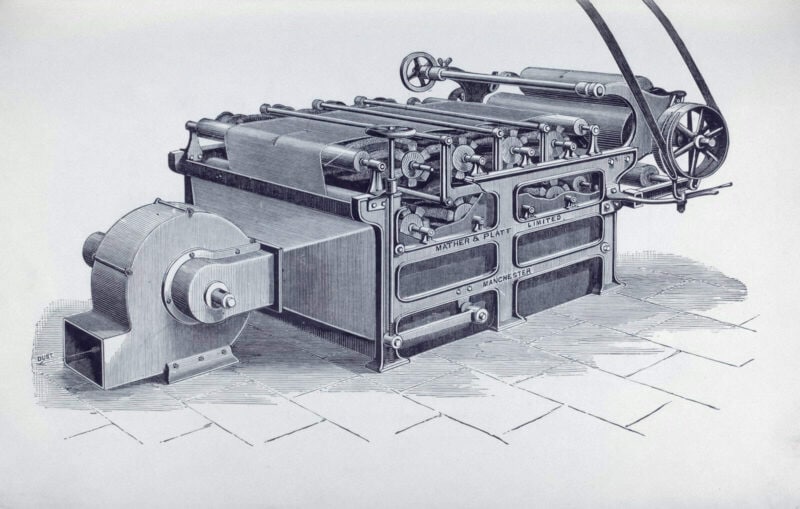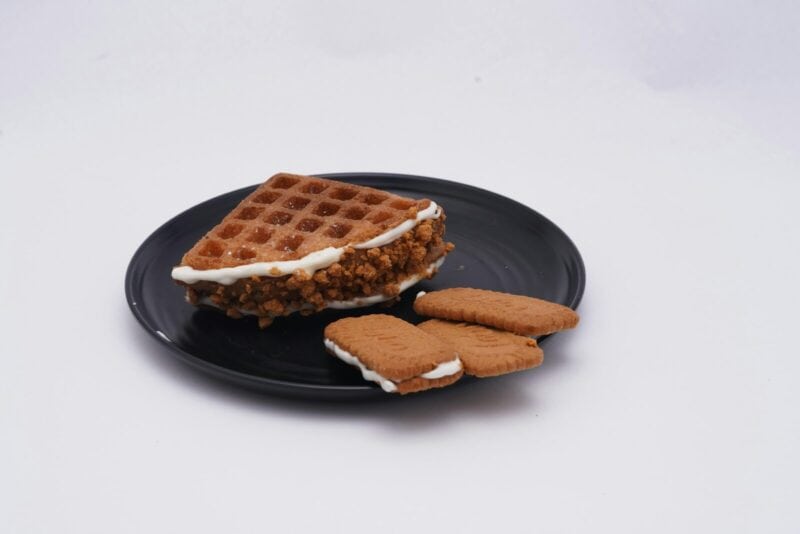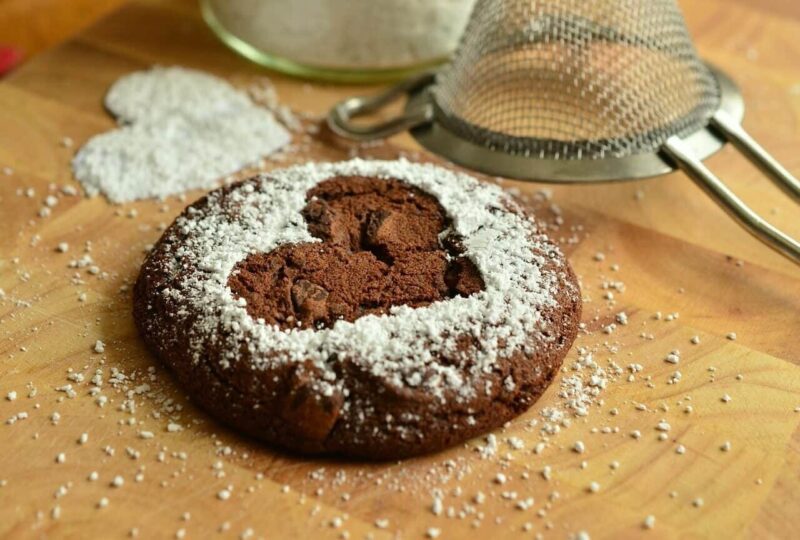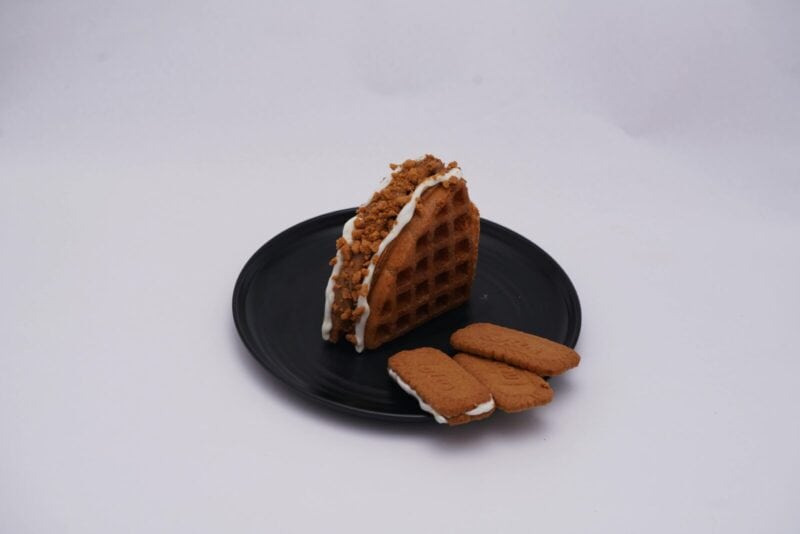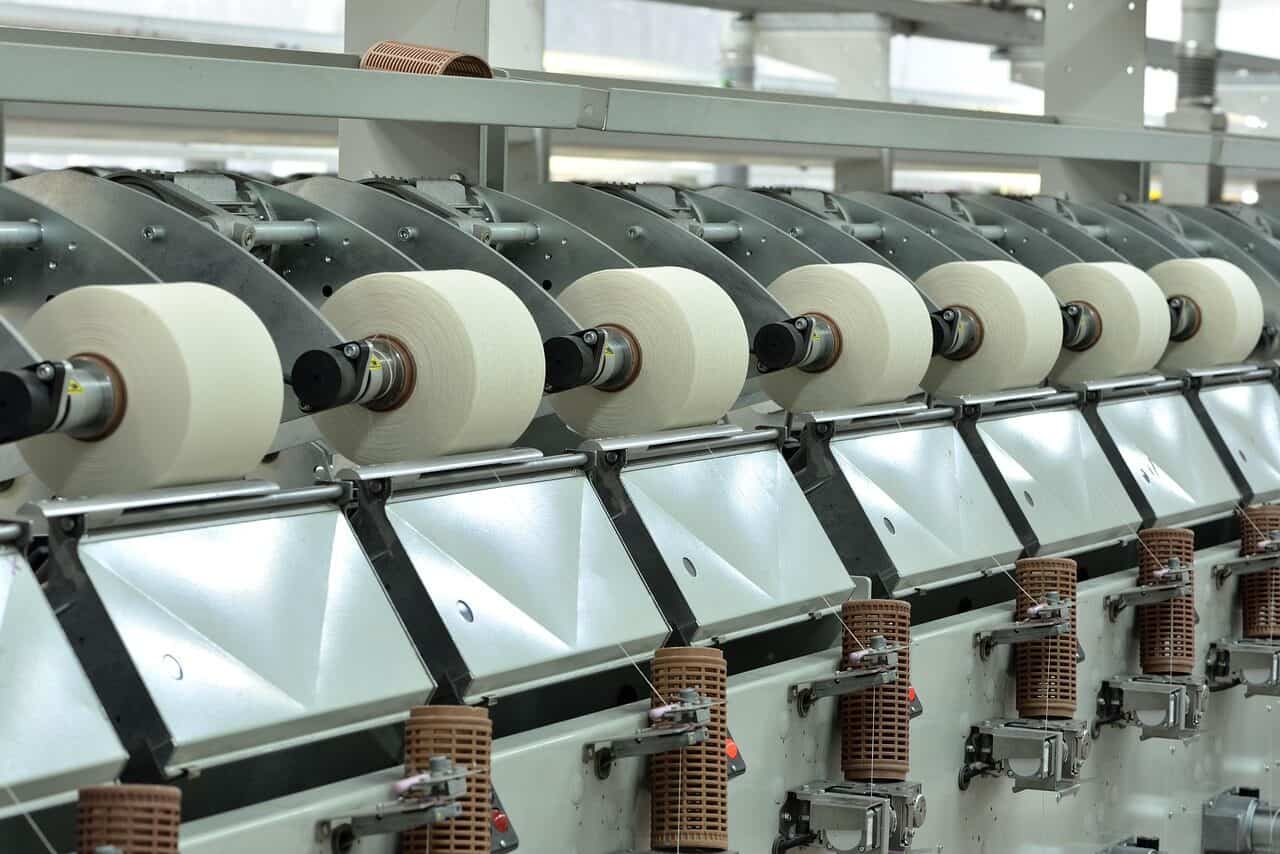Produção de máquinas para biscoitos: Um Guia Profissional do Fabricante
Introdução
Você está pronto para transformar sua receita de biscoito favorita de um pequeno projeto de cozinha em um grande sucesso comercial? O caminho da sua cozinha para o mercado envolve muitas decisões importantes, e a escolha do equipamento de produção correto é a mais crucial. Aumentar sua produção não significa apenas fazer mais biscoitos; trata-se de fazê-los melhor, de forma mais consistente e mais eficiente. O maquinário que você escolher se tornará o centro do seu negócio, determinando a qualidade do seu produto, a quantidade que você pode produzir e, por fim, o lucro que você obtém.
Este guia será seu parceiro nessa jornada. Como fabricantes experientes de máquinas para biscoitos, nós o acompanharemos em todas as etapas: desde a compreensão dos tipos básicos de máquinas até o projeto de sua linha de produção, fazendo um investimento inteligente e preparando-se para o futuro da produção de biscoitos. Queremos tornar o processo claro e simples, dando a você a compreensão e a confiança de que precisa para construir um negócio de biscoitos bem-sucedido do zero.
Entendendo os tipos de biscoitos
Começa com o produto
Antes de considerar qualquer equipamento, a primeira e mais importante decisão é definir seu produto. As características de seu biscoito - textura, teor de gordura e açúcar, formato e tamanho - são os principais fatores que orientarão todas as suas decisões de maquinário. Um biscoito duro e crocante precisa de um processo completamente diferente de um biscoito macio e mastigável. Esclarecer sua linha de produtos desde o início evita erros dispendiosos e garante que seu investimento corresponda perfeitamente à sua visão. Essa etapa inicial é a base sobre a qual toda a sua linha de produção será construída.
Principais categorias de biscoitos
Para selecionar o maquinário certo para biscoitos, é preciso primeiro entender as principais categorias de biscoitos e suas necessidades básicas de processamento. Embora existam inúmeras variações, a maioria dos biscoitos comerciais se enquadra em um desses grupos.
- Biscoitos duros e crackers: Esses produtos, como os biscoitos Marie ou as bolachas salgadas, têm uma massa forte e elástica com teor relativamente baixo de gordura e açúcar. O processo de produção se concentra no desenvolvimento de uma rede de glúten. Isso exige um maquinário robusto, incluindo uma linha de laminação com vários rolos de calibre para reduzir gradualmente a espessura da folha de massa sem danificá-la. A estratificação geralmente é necessária para que os biscoitos criem sua textura em camadas característica. O cozimento normalmente é feito em um forno túnel longo com queima direta de gás (DGF), que fornece o calor intenso e seco necessário para um acabamento crocante e baixo teor de umidade.
- Biscoitos e bolachas de massa mole: Essa categoria inclui produtos com altas quantidades de gordura e açúcar, como biscoitos com gotas de chocolate, shortbread e biscoitos depositados. A massa é curta, o que significa que tem baixo desenvolvimento de glúten, resultando em uma textura macia, quebradiça ou mastigável. A principal formação As máquinas aqui são moldadoras rotativas para biscoitos com relevo ou, mais comumente, máquinas de corte a fio e depositadores que lidam com a massa pegajosa e menos coesa. O cozimento geralmente é realizado em um forno híbrido ou de convecção indireta, que fornece calor suave e uniforme para manter a umidade e evitar o escurecimento excessivo.
- Wafers (planos e ocos): Os wafers são únicos porque começam com uma massa líquida, não com uma massa. Isso exige um front end completamente diferente da linha de produção, começando com misturadores de massa e dosadores de alta velocidade. O núcleo de uma linha de wafer é o forno especializado em wafer, que consiste em vários pares de placas de cozimento gravadas (pinças) que se prendem umas às outras para assar folhas finas e precisas. Após o cozimento, essas folhas passam por um arco de resfriamento antes de serem colocadas em camadas de creme em uma máquina de creme e cortadas em produtos finais.
- Biscoitos recheados e de sanduíche: Esse não é um tipo de biscoito principal, mas sim uma categoria de valor agregado. Qualquer biscoito básico, seja ele duro ou macio, pode ser transformado em um biscoito tipo sanduíche. Esse processo ocorre após o cozimento e o resfriamento. Ele requer um maquinário dedicado pós-cozimento, como uma máquina de sanduíche de biscoito. Essa máquina usa estênceis para aplicar uma quantidade precisa de recheio de creme em um biscoito antes de cobri-lo com outro. As esteiras de multiplicação são frequentemente usadas para lidar com a saída em alta velocidade e alinhar os biscoitos perfeitamente.
Anatomia da linha de produção
De cru a pronto
Embora cada A linha de produção de biscoitos é personalizada Para atender aos requisitos específicos de produto e capacidade, o processo geral segue um fluxo universal, passo a passo. Compreender esse fluxo é essencial para visualizar como as máquinas individuais se conectam para formar um sistema unificado e eficiente. Podemos dividir essa jornada, desde os ingredientes brutos até o produto embalado, em sete estágios principais. Cada estágio é realizado por uma peça específica de maquinário para biscoitos, projetada para uma função precisa.
Os sete estágios principais
- Etapa 1: Mistura da massa e fermentação
O processo começa aqui. A máquina principal é a batedeira, responsável por combinar uniformemente farinha, açúcar, gordura, água e outros ingredientes em uma massa consistente. Para biscoitos duros, um misturador de massa horizontal é o padrão, pois seus potentes braços em forma de sigma podem desenvolver a forte estrutura de glúten necessária. Para massas macias, um misturador vertical ou planetário é geralmente preferido por sua ação de mistura mais suave que evita o desenvolvimento excessivo do glúten. Em alguns casos, como no caso dos biscoitos de soda, esse estágio também inclui um período de fermentação em recipientes com temperatura controlada.
- Etapa 2: Formação e modelagem da massa
É aqui que a massa ganha sua forma final. A escolha da máquina é determinada inteiramente pelo tipo de massa. Para massas duras, é usada uma linha de laminação composta por rolos medidores e um cortador rotativo. A massa é passada por uma série de rolos para atingir uma espessura precisa antes que o cortador rotativo corte os formatos de biscoito e faça furos na massa. Para massas macias, um moldador rotativo pressiona a massa em gravuras em um rolo, ou uma máquina de corte de arame empurra uma tora de massa e um arame corta pedaços individuais. Os depositadores são usados para massas de biscoito muito macias, quase como uma massa.
- Etapa 3: Cozimento
O forno túnel é o coração da linha de produção e o investimento mais significativo em termos de custo e espaço físico. O tipo de forno afeta diretamente a cor, a textura, a umidade e o prazo de validade do produto final.
- Fornos com queima direta de gás (DGF): As chamas aquecem diretamente a câmara de cozimento. Ideal para biscoitos e bolachas duras, proporcionando alto calor para rápida remoção de água e uma textura crocante.
- Fornos de convecção indireta: Um trocador de calor separa os produtos de combustão do ar da câmara de cozimento, que é então circulado por ventiladores. Isso proporciona um cozimento mais suave e uniforme, perfeito para biscoitos macios, cookies e bolos, preservando a umidade e a cor.
- Fornos híbridos: Esses fornos combinam diferentes zonas de aquecimento (por exemplo, DGF para a "primavera do forno" inicial seguida de convecção para o acabamento) para oferecer o melhor dos dois mundos, proporcionando o máximo de flexibilidade.
- Estágio 4: Resfriamento
Depois de sair do forno a altas temperaturas, os biscoitos são frágeis e devem ser resfriados gradualmente. Isso é feito em esteiras de resfriamento longas e de malha aberta. O comprimento é calculado para permitir que os biscoitos atinjam a temperatura ambiente lentamente. O resfriamento rápido pode causar "checagem" - a formação de rachaduras finas -, o que compromete a integridade estrutural do biscoito e o prazo de validade. O resfriamento adequado garante que o biscoito fique estável o suficiente para ser empilhado e embalado.
- Etapa 5: Processamento pós-cozimento (opcional)
Essa etapa agrega valor e variedade. As máquinas aqui incluem pulverizadores de óleo, que dão brilho e sabor aos biscoitos imediatamente após o cozimento. Também podem ser usados coberturas de açúcar ou sal. Para biscoitos tipo sanduíche, é aqui que se encontra a máquina de sanduíche de biscoito, que aplica o creme e cria o produto final.
- Estágio 6: Empilhamento e alimentação
Antes de embalar, o fluxo de biscoitos que sai da esteira de resfriamento deve ser organizado. Esse é o trabalho da máquina de empilhamento. Os empilhadores de roda em estrela ou "penny" recebem os biscoitos e os organizam em faixas ou pilhas ordenadas e contadas, prontas para serem alimentadas diretamente na máquina de embalagem. Isso automatiza o que, de outra forma, seria um processo altamente trabalhoso.
- Etapa 7: Embalagem
O estágio final é embrulhar os biscoitos para preservar o frescor, protegê-los durante o transporte e apresentá-los de forma atraente ao consumidor. A máquina mais comum é uma empacotadora de fluxo horizontal, que cria "pacotes de pilha" ou "pacotes de lesma". Esses pacotes embrulhados podem então ser alimentados em uma máquina de cartonagem, que constrói, preenche e sela caixas de papelão para venda no varejo.
Escolha do maquinário correto
Além da etiqueta de preço
A seleção do maquinário certo para biscoitos é uma decisão estratégica que vai muito além da simples comparação de listas de preços. A "melhor" máquina não é a mais barata ou a mais avançada; é aquela que oferece o "melhor ajuste" para seu produto, capacidade, orçamento e instalação específicos. Um investimento inteligente considera o custo total de propriedade, inclusive a eficiência operacional, a manutenção e o potencial de crescimento futuro. Para navegar por essa decisão complexa, orientamos nossos clientes por meio de uma estrutura estruturada, garantindo que todos os fatores críticos sejam considerados.
A matriz de decisão
Para fazer uma escolha informada, você precisa fazer as perguntas certas. Desenvolvemos uma matriz de tomada de decisões para ajudar os compradores em potencial a analisar suas necessidades sistematicamente. Essa ferramenta transforma uma escolha desafiadora em uma série de perguntas gerenciáveis, levando a uma conclusão lógica.
| Critérios | Perguntas que você deve fazer a si mesmo | Impacto na escolha da máquina | Dica do fabricante |
| Capacidade de produção | Qual é sua meta de produção (kg/hora)? Você prevê crescimento futuro? | Determina o tamanho, a velocidade e o nível de automação da linha. Uma capacidade maior requer um forno e um equipamento de formação mais amplos e rápidos. | Sempre planeje uma capacidade 15-20% maior do que sua meta inicial. Esse buffer acomoda o crescimento sem exigir um grande reinvestimento muito cedo. |
| Versatilidade do produto | Você produzirá um tipo de biscoito ou vários tipos na mesma linha? | Uma linha multiuso requer máquinas mais versáteis, como moldadores combinados ou fornos híbridos, o que pode aumentar o investimento inicial. | Se o orçamento for limitado, concentre-se em uma linha de produtos principal, mas certifique-se de que o layout permita futuros acréscimos de diferentes unidades de formação ou pós-cozimento. |
| Orçamento e ROI | Qual é o seu orçamento total de despesas de capital? Qual é o cronograma de retorno esperado do investimento? | Influencia a escolha entre linhas semiautomáticas ou totalmente automáticas e equipamentos novos ou usados. Uma linha totalmente automática tem um custo inicial mais alto, mas custos de mão de obra mais baixos a longo prazo. | Ao calcular o ROI, leve em consideração todos os custos operacionais - energia, mão de obra, manutenção e consumíveis - e não apenas o preço de compra inicial. |
| Espaço da fábrica | Qual é a área útil disponível, o comprimento e a altura de suas instalações? | O layout físico do maquinário deve se ajustar ao espaço disponível. Os fornos de túnel, em particular, exigem um comprimento significativo, e os transportadores de resfriamento podem ser dispostos em várias camadas para economizar espaço no chão. | Um fabricante profissional fornecerá um desenho de layout personalizado (CAD) para garantir um ajuste perfeito e um fluxo de trabalho eficiente em suas instalações. |
| Fonte de energia | Quais fontes de energia estão disponíveis e são econômicas em seu local (gás natural, GLP, eletricidade)? | Isso afeta diretamente a escolha do forno e pode afetar significativamente os custos operacionais de longo prazo. A disponibilidade e o preço do gás variam muito de acordo com a região. | Os fornos a gás direto geralmente são mais eficientes em termos de energia para biscoitos duros, enquanto os fornos elétricos podem oferecer um controle mais preciso para itens especiais. Analise cuidadosamente seus custos de serviços públicos locais. |
| Habilidades trabalhistas | Qual é o nível de habilidade e a disponibilidade de sua força de trabalho local? | As linhas totalmente automatizadas exigem menos operadores, mas mais técnicos altamente qualificados para manutenção e solução de problemas. As linhas semiautomáticas podem exigir mais trabalho manual, mas com menos treinamento técnico. | As modernas interfaces de máquina (HMIs) estão se tornando mais intuitivas, mas o treinamento abrangente do fabricante durante o comissionamento é essencial para o sucesso. |
Diversas aplicações do setor
Um setor, muitos produtos
O termo "linha de biscoitos" é enganosamente simples. Na realidade, trata-se de um sistema modular que pode ser configurado de inúmeras maneiras para produzir uma vasta gama de produtos. Ao combinar diferentes máquinas formadoras, tipos de fornos e unidades de pós-cozimento, um fabricante pode adaptar uma linha a um nicho de mercado específico ou criar um sistema versátil capaz de produzir várias famílias de produtos. Essa modularidade é a chave para a inovação e a capacidade de resposta do mercado no setor de panificação. Como fabricantes, configuramos linhas para tudo, desde simples biscoitos até iguarias complexas, com várias camadas e recheio de creme.
Exemplos de configurações de produtos
Para ilustrar essa versatilidade, a tabela abaixo mostra como diferentes configurações de maquinário são usadas para criar alguns dos produtos de biscoito e crackers mais populares do mundo. Isso demonstra como os princípios discutidos anteriormente se traduzem em configurações de fábrica no mundo real.
| Produto final | Principais características da massa | Máquina formadora essencial | Unidade essencial de cozimento/pós-cozimento |
| Marie Biscuits / Hard Biscuits | Massa rígida, com baixo teor de gordura e glúten desenvolvido | Cortador, rolos de calibre, cortador rotativo | Forno de túnel longo (queima direta de gás) |
| Cookies com gotas de chocolate | Massa curta, macia, com alto teor de gordura e açúcar | Máquina de corte de fios ou depositador | Forno de convecção indireta ou híbrido |
| Soda Crackers | Massa em camadas, fermentada e em camadas | Laminador, linha de laminação, cortador rotativo | Forno a gás direto, pulverizador de óleo pós-assamento |
| Cremes para sanduíche (por exemplo, Oreos) | Qualquer biscoito básico (geralmente duro, com relevo) | (Conforme o biscoito de base, por exemplo, Rotary Molder) | Máquina de sanduíche de biscoito com bomba de creme |
| Batatas fritas de wafer | Massa líquida de baixa viscosidade | Misturador e depositador de massa de wafer | Forno para placas de wafer, espalhador de creme, unidade de corte |
Instalação e operação
Parceria além da entrega
Nosso relacionamento com um cliente não termina quando o maquinário é enviado. Na verdade, uma fase crucial está apenas começando. A instalação bem-sucedida, o comissionamento e a operação de longo prazo de um equipamento de linha de produção de biscoitos dependem de uma estreita parceria entre o usuário e o fabricante. Nós nos vemos como seus parceiros técnicos, comprometidos em garantir que seu investimento tenha um desempenho ideal desde o primeiro dia e por décadas. Esse suporte pós-compra é o que separa um mero fornecedor de equipamentos de um verdadeiro provedor de soluções.
Uma instalação tranquila
Um lançamento bem-sucedido começa muito antes da chegada das máquinas.
A lista de verificação pré-instalação: Trabalhamos com os clientes para garantir a prontidão total do local. Isso envolve verificar se o chão de fábrica está perfeitamente nivelado - frequentemente vemos clientes subestimarem como uma leve inclinação pode causar problemas de rastreamento com uma esteira de forno de 30 metros. Também inclui a confirmação de que todas as conexões de serviços públicos - energia elétrica, linhas de gás e ar comprimido - estão instaladas e atendem às capacidades especificadas.
Comissionamento e treinamento no local: Nossos técnicos fazem mais do que apenas montar a linha. Durante o comissionamento, eles testam sistematicamente cada componente, ajustando o sistema com seus ingredientes reais para obter o produto desejado. Esse período também é crucial para o treinamento intensivo. Treinamos seus operadores na operação diária da linha e sua equipe de manutenção em protocolos de segurança, solução de problemas e cuidados preventivos. Um erro comum é não dedicar o pessoal-chave a esse treinamento, o que pode levar a um tempo de inatividade evitável mais tarde.
O segredo da longevidade
Uma linha de máquinas para biscoitos é um ativo importante projetado para uma longa vida útil. O segredo para maximizar essa vida útil e garantir um desempenho consistente é passar de uma cultura de manutenção reativa ("conserte quando quebrar") para uma cultura de manutenção proativa. A manutenção preventiva é um cronograma de verificações regulares, limpeza, lubrificação e substituição de peças que evita falhas graves antes que elas ocorram. Nossos clientes mais bem-sucedidos seguem rigorosamente um cronograma de manutenção.
| Frequência | Componente | Tarefa de manutenção | Finalidade |
| Diariamente | Correias transportadoras | Verifique o rastreamento e a tensão. Limpe os resíduos de produtos da correia e dos roletes. | Evita danos à correia, atolamentos de produtos e problemas de higiene. |
| Semanal | Misturador de massa | Inspecione as vedações e os rolamentos do eixo do misturador. Lubrifique as correntes e engrenagens de acionamento. | Evita o vazamento de ingredientes, a contaminação e a falha mecânica. |
| Mensal | Queimadores/elementos do forno | Inspecione visualmente se há bloqueios ou danos. Verifique os sistemas de ignição e os padrões de chama. | Garante o cozimento uniforme, a eficiência energética ideal e a segurança operacional. |
| Trimestral | Caixas de engrenagens e motores | Verifique os níveis e a qualidade do óleo nas caixas de câmbio. Observe se há ruídos ou vibrações incomuns. | Evita falhas catastróficas nos principais sistemas de acionamento. |
| Anualmente | Todos os painéis elétricos | Verifique o aperto de todas as conexões dos terminais. Limpe a poeira com ar comprimido. Teste todos os circuitos de segurança (por exemplo, paradas de emergência). | Essencial para a prevenção de incêndios e para garantir a segurança do operador. |
O futuro da produção
Cozinhando para o amanhã
O setor de biscoitos não é estático. Os gostos dos consumidores estão evoluindo, assim como as tecnologias usadas para atender a essas demandas. Ao investir em uma linha de produção hoje, é aconselhável considerar as tendências que moldarão o setor amanhã. Um fabricante com visão de futuro projeta máquinas que não são apenas eficientes hoje, mas também adaptáveis para o futuro. Estamos constantemente inovando para incorporar essas tendências em nossos equipamentos.
- Automação e Indústria 4.0: A integração de controles PLC avançados e telas HMI intuitivas agora é padrão. O futuro é a conexão desses sistemas em rede. Isso permite o monitoramento remoto da linha de produção a partir de um escritório central ou até mesmo de um dispositivo móvel, o gerenciamento avançado de receitas para trocas de produtos rápidas e sem erros e o registro de dados para análise de desempenho e manutenção preditiva, reduzindo a dependência de mão de obra e o erro humano.
- Sustentabilidade e eficiência energética: Com o aumento dos custos de energia e as preocupações ambientais, a eficiência é fundamental. O maquinário moderno para biscoitos se concentra fortemente nesse aspecto. Os novos projetos de fornos apresentam isolamento superior, sistemas de recuperação de calor que usam o calor da exaustão para pré-aquecer o ar de entrada e queimadores mais eficientes. Os fornos híbridos modernos podem reduzir o consumo de gás em até 20% em comparação com os projetos mais antigos, oferecendo uma redução significativa nos custos operacionais de longo prazo.
- Segurança e higiene alimentar aprimoradas: Os padrões de segurança alimentar estão se tornando cada vez mais rígidos. As máquinas preparadas para o futuro são projetadas para a higiene. Isso significa usar uma construção de aço inoxidável, eliminando áreas de difícil acesso onde a massa ou os resíduos podem se acumular e projetando componentes para fácil desmontagem e limpeza. Alguns sistemas agora estão incorporando a tecnologia CIP (Clean-in-Place), automatizando ainda mais o processo de higienização.
- Flexibilidade e personalização: O mercado exige variedade. Os consumidores querem novos sabores, opções mais saudáveis e diferentes tamanhos de embalagens. Isso exige máquinas flexíveis. O futuro está nos projetos modulares que permitem trocas mais rápidas. Uma linha pode ser projetada para trocar facilmente uma moldadora rotativa por uma máquina de corte a fio ou para ignorar uma estação de creme, permitindo que um produtor mude de um biscoito duro para um cookie ou para um creme de sanduíche com o mínimo de tempo de inatividade.
Seu plano de sucesso
Conclusão
Desde a definição das características exclusivas de seu biscoito até a compreensão dos intrincados estágios de produção, a escolha do maquinário certo para biscoitos é uma jornada de decisões bem informadas. Exploramos a anatomia completa de uma linha de produção, desde o misturador de massa inicial até o invólucro da embalagem final. Fornecemos uma estrutura estratégica para orientar sua seleção, enfatizando que fatores como capacidade, versatilidade e espaço na fábrica são tão cruciais quanto o preço inicial. Ao examinar as aplicações do setor no mundo real e planejar todo o ciclo de vida operacional com um plano de manutenção proativo, você estará preparando a sua operação para o sucesso contínuo.
Lembre-se, Investimento em uma linha de produção de biscoitos é mais do que uma despesa de capital; é a base da qualidade, da eficiência e do crescimento futuro de sua marca. É o motor que transformará sua receita em um nome familiar. Escolha um fabricante que atue como parceiro, fornecendo conhecimento especializado não apenas sobre o equipamento, mas também sobre o processo, e você terá a receita definitiva para o sucesso comercial nesse setor dinâmico.
Perguntas frequentes
Q1: Qual é a vida útil média de uma linha completa de produção de máquinas para biscoitos?
R: Com a manutenção preventiva adequada, conforme descrito acima, um produto de alta qualidade linha de produção de um fabricante de boa reputação podem ter uma vida útil de 20 a 30 anos ou mais. Os principais componentes, como fornos de túnel, misturadores e a estrutura principal de aço, são construídos para uma longevidade extrema. Peças de desgaste, como correias transportadoras, rolamentos e vedações, exigirão substituição periódica como parte do cronograma normal de manutenção, mas o ativo principal é um investimento de longo prazo.
P2: Posso começar com uma linha semiautomática e fazer o upgrade para totalmente automática mais tarde?
R: Sem dúvida. Essa é uma estratégia comum e altamente recomendada para novos empreendimentos ou empresas que estão entrando em um novo mercado. Um bom fabricante pode projetar uma linha modular desde o início. Por exemplo, você pode começar com alimentação manual de massa e empacotamento manual de caixas. À medida que a demanda de produção e a receita aumentarem, você poderá adicionar sistemas automatizados de alimentação de massa, empilhadeiras automáticas e empacotadoras de caixas robóticas à linha existente, aumentando o nível de automação de acordo com o crescimento da empresa.
Q3: Qual é o custo de uma linha de produção de biscoitos?
R: Essa é a pergunta mais comum, mas não tem uma resposta única. O custo do maquinário para biscoitos varia drasticamente com base em vários fatores importantes: capacidade (de 100 kg/h a mais de 5.000 kg/h), nível de automação, tipo de biscoito (uma linha de wafer é muito diferente de uma linha de cracker) e a origem e a qualidade do fabricante. Uma linha muito pequena e básica pode começar na casa das dezenas de milhares de dólares, enquanto um sistema de grande capacidade e totalmente automatizado de um fabricante europeu de primeira linha pode custar vários milhões. É fundamental obter uma cotação personalizada com base em suas necessidades específicas.
Links de referência:
BEMA - Fabricantes de Equipamentos de Panificação e Aliados https://www.bema.org/
Sociedade Americana de Panificação (ASB) https://asbe.org/
Associação Americana de Padeiros (ABA) https://americanbakers.org/
Reading Bakery Systems - Equipamento industrial para biscoitos https://www.readingbakery.com/
Exposição Internacional do Setor de Panificação (IBIE) https://www.bakingexpo.com/
Revista Baking Business https://www.bakingbusiness.com/
Panificação comercial - Notícias do setor https://commercialbaking.com/
AIB International - Ciência e Tecnologia de Panificação https://www.aibinternational.com/
Revista Snack Food & Wholesale Bakery https://www.snackandbakery.com/
Retail Bakers of America (RBA) https://www.retailbakersofamerica.org/

